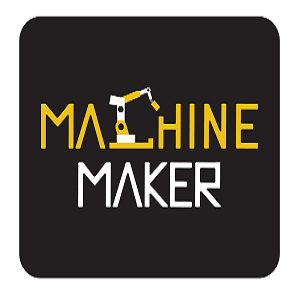ZF is setting the stage for a new era in automotive data transmission with the development of optical multi-gigabit Ethernet for software-defined vehicles. The company has enhanced its ProAI high-performance computer to support optical data transfer, enabling ultra-fast transmission through automotive-grade optical fibers that comply with the IEEE 802.3cz standard. This breakthrough technology is poised to significantly improve vehicle electrical systems, making data transfers faster and more reliable.
According to Oliver Briemle, Head of Cross-Domain Computing at ZF, “This high-speed transmission technology is crucial for the future of automotive electrical systems, especially for software-defined vehicles. It supports both short- and long-distance data transfers, with a reach of up to 40 meters, and will enter series production as early as next year.”
Optical multi-gigabit Ethernet is expected to revolutionize data transmission in various vehicle types, including cars, trucks, buses, and shuttles. Extensive testing has confirmed its robustness in a range of operating environments, establishing it as a versatile, future-proof solution for automotive data communication.
This new technology presents several key advantages that make it highly attractive for modern vehicle systems. First and foremost, the standard supports exceptionally high data transfer rates, offering speeds ranging from 2.5 Gbit/s to 50 Gbit/s.
These speeds are essential for managing the ever-growing volumes of data generated by advanced automotive technologies, such as autonomous driving (ADAS), infotainment (IVI), and connected services. As vehicles continue to integrate more complex systems, the ability to handle such high-speed data becomes a critical factor in ensuring smooth operation and optimal performance.
One of the significant improvements offered by optical multi-gigabit Ethernet over previous technologies is its increased transmission range. While traditional optical or copper-based systems had limited reach, this new technology allows for data transmission over distances of up to 40 meters.
This expanded range makes it highly versatile, supporting both short- and long-distance communication needs within a variety of automotive applications. Whether it’s managing data across different components in a vehicle or ensuring efficient communication over longer distances, this technology delivers impressive flexibility.
Another standout feature of this technology is its ability to reduce weight, a crucial consideration in modern vehicle design. Traditional copper wiring, commonly used for data transmission, is significantly heavier than fiber optic cables.
By adopting optical fiber, manufacturers can reduce the overall weight of the vehicle, which in turn leads to improved fuel efficiency and lower energy consumption. This weight reduction not only benefits the vehicle’s performance but also contributes to more sustainable and efficient fleets in the automotive industry.
Reliability and durability are also key advantages of optical multi-gigabit Ethernet. Unlike copper-based systems, optical fiber is immune to electromagnetic interference, ensuring stable and uninterrupted data transmission even in environments with high electromagnetic noise. This feature is especially valuable in automotive applications, where the need for consistent and reliable communication is paramount. Additionally, optical fibers are more durable than their copper counterparts, offering long-lasting performance under extreme conditions, further enhancing the overall reliability of the system.
Energy efficiency is another area where optical systems outperform traditional copper wiring. The IEEE 802.3cz-2023 standard for optical multi-gigabit Ethernet is designed to consume significantly less power for data transmission, making it an ideal choice for modern vehicles focused on optimizing energy use. Given the increasing emphasis on electric vehicles and fuel-efficient designs, the lower power requirements of optical systems help contribute to the overall goal of reducing energy consumption and enhancing vehicle sustainability.
The scalability of optical multi-gigabit Ethernet also positions it as a future-proof solution for the automotive industry. As vehicle technologies continue to evolve, the ability to easily upgrade components without overhauling the entire infrastructure is a significant advantage. Optical systems can support future high-performance components like high-performance computers (HPCs) and electronic control units (ECUs), ensuring that the vehicle’s communication network remains capable of handling the demands of new technologies. This scalability guarantees that the system can continue to meet the needs of increasingly sophisticated vehicle systems.
Cost efficiency is another compelling reason to adopt optical Ethernet systems. The global production of OM3 optical fibers, along with key components like VCSELs (vertical-cavity surface-emitting lasers) and photodiodes, has increased significantly. This high production volume has led to a decrease in costs, making optical systems more affordable for mass production in the automotive sector. As a result, manufacturers can integrate advanced communication technologies into their vehicles without significantly raising production costs, enabling the widespread adoption of optical Ethernet systems.
Lastly, optical multi-gigabit Ethernet systems offer optimized communication channels, contributing to enhanced overall performance. The simplicity and low complexity of these systems lead to reduced power consumption, lower latency, and improved data transmission efficiency. Additionally, the inclusion of a dedicated operations, administration, and maintenance (OAM) channel ensures that the communication link remains reliable and well-managed, further enhancing the system’s performance and longevity. Together, these features create an efficient and robust communication network ideal for the demands of modern automotive systems.
As data demands continue to grow in the automotive sector, ZF’s optical multi-gigabit Ethernet technology represents a crucial step toward achieving faster, more efficient, and reliable vehicle communication systems. By leveraging cutting-edge optical technology, ZF is helping to lay the foundation for the next generation of software-defined vehicles.







